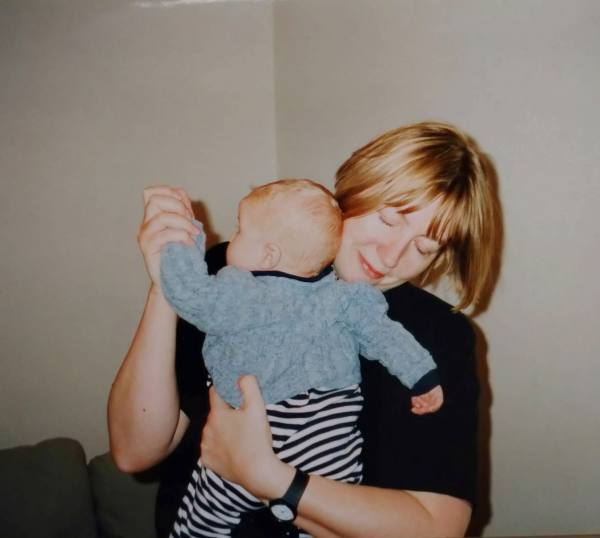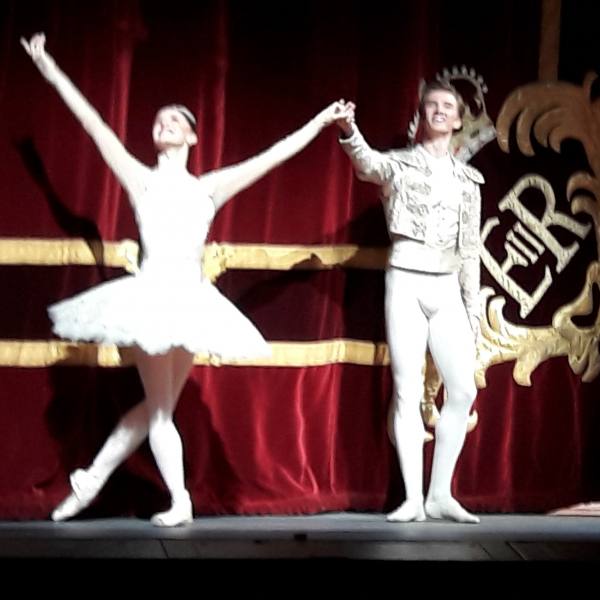I’ve always loved dancing, from ballet classes as a little girl, to ballroom classes in recent years. Dance is a major theme in my new novel ONLY YOU, which will be published in the UK on April 30th by Pan Macmillan. For me, the giddy exhilaration of a Viennese waltz feels a lot like falling in love and I wanted to see if I could recreate that unique joy in a novel.
Only You is the story of Letty, 21, a former ballet student, and Alf, 19, a junior ballroom champion, who meet in Rome. Both escaping from problems back home in England, they are learning Italian, but they really communicate through dance. When they waltz around the Piazza Navona, Letty’s life begins to have meaning again. Falling back in love with dance allows her to begin to rediscover happiness.
Dancing is good for you. Like any physical exercise, it gets your muscles working and heart rate up, but it’s also stimulating for your mind. The former prima ballerina and Strictly judge, Darcey Bussell, recently made a television programme highlighting the therapeutic effects of dancing on mental health. There’s something about the coordination of movement, music and expression that makes human beings feel better when they do it.
During lockdown, there’s been a craze for ballet classes online, Strictly stars teaching simple routines, as well as many thousands of ordinary people posting videos on Ant and Dec’s Saturday Night Takeaway and Good Morning Britain. Dancing seems to be the way people are choosing to connect with each other, to have fun, but also to express emotion with whatever music suits the mood.
Fourteen months ago, long before anyone had heard of coronavirus, dancing became a lifeline for me. I went to hospital for what I thought was a routine test, and came away with a diagnosis of cancer.
My son was with me at the hospital. Trying to process the shock as we trundled home in the Hackney rush-hour traffic on the 236 bus, we decided that, whatever happened, we would make it the best time we could.
 Me dancing with Connor when he was a baby!
Me dancing with Connor when he was a baby!
My son has always loved dancing too. As a child, he trained with the Royal Ballet School and competed in the ballroom and Latin team at university. The first thing he did, after we’d told a few close friends and family my news, was book ourselves into a tea dance at the Floral Hall in Covent Garden.
During the following fortnight, before my treatment started, my life consisted of having scans at hospital then rushing off to tea dances all over London – Shoreditch Town Hall, Spitalfields market, the Rivoli Ballroom. We’d known that these things happened and thought that they were a lovely idea, but without the urgency of my diagnosis, we would never have gone. It’s simply impossible to feel worried when you’re waltzing!
When my cancer treatment made me too weak to dance myself, I found life-enhancing pleasure in watching others trip the light fantastic.
I remember one summer holiday long ago, stopping in a village in Andalusia, where a man was strumming a guitar. Quite spontaneously, two middle-aged women sitting on a bench got up to dance a Sevillana together. They were not slim, nor beautiful, nor dressed-up, but the way their bodies moved in synchronicity with the music created an emotional connection not just between them, but with others in the square. People paused their evening paseo, everyone who watched feeling lucky to be alive, in that place, in that moment.
 My son Connor and I at the Rivoli Ballroom, South London
My son Connor and I at the Rivoli Ballroom, South London
I am sure this is why Strictly Come Dancing continues to be so popular. Of course, we love the costumes, the gossip, the razzmatazz and the pantomime camp, but this would wear thin quickly, were it not for the pleasure of seeing the particular magic of a dance performed live and the electricity some couples generate in performance.
I know that a lot of people don’t think ballet is for them. I blame those jewel boxes where you open the lid and there’s a little pink ballerina twirling around to the tinkle of the Sugar Plum fairy theme. It’s an image that suggests ballet is exclusively feminine and a bit twee really, but it is so much more than that. Many people also don’t know that is possible to see ballet for less than the price of a cinema ticket.
I admire the dancers’ almost superhuman physical skills, the precision, the bravery, the technique, but it is the artistry of combining these with music and storytelling, that transports me to a place where I feel emotions more strongly and see beauty more clearly. For me, watching ballet is like getting a shot of pure happiness.
Storytelling always helps us through times of crisis. It’s a way of processing our feelings and finding comfort in the universality of human emotions. As a storyteller myself, I find blissful relaxation in absorbing narrative told wordlessly through dance and music – whether these are profound explorations of the human spirit, such as Kenneth Macmillan’s Manon, Cathy Marston’s recent new work The Cellist, or the iconic fairy stories of classical ballet.
Fairy tales are stitched into the fabric of our psyches from the earliest age. The stereotypes of women can be baleful or even damaging, and yet the narratives of plight, heroism and redemption are imprinted on our minds as indelibly as our familial relationships. I think this is what makes closet romantics of even the most cynical among us. The completion of a narrative with a happy or even a tragic ending leaves us with a profound sense of satisfaction. Though I resist the idea that the female characters are idealised versions of how women should be, there is something about the purity of romance expressed in ballet that touches the soul.
We all know that our lives are limited, but we still treat our time casually, as if it is limitless. Living with cancer, each day feels like a blessing to be enjoyed with passionate enthusiasm.
 Me at the Royal Opera House first night Don Quixote
Me at the Royal Opera House first night Don Quixote
The day I consented to aggressive chemotherapy, where the consultant had scrawled ‘death’ as a possible side effect, became one of the best days of my life. After emerging dazed from the oncologist appointment, I dashed across London to get to the opening night of Carlos Acosta’s Don Quixote at the Royal Opera House. It is the sunniest of productions and my two favourite principal dancers, Marianela Nunez and Vadim Muntagirov, were performing. They were simply sensational and the whole company was on terrific form. This was my idea of heaven.
If you had asked me that morning how I might feel in the evening, I would probably have replied ‘sad’, because this might well be the last time I would see that ballet. However, it occurred to me during the first interval that this was in fact the only time that anyone would see this particular show. It dawned on me then that it is this unique and fleeting beauty that makes live performance so scintillating, so precious and such a privilege to witness. I decided I would see every live performance I possibly could, and I truly believe that the joy I experienced doing just that kept me going throughout my year of intensive treatment.
 Marianela Nunez and Vadim Muntagirov curtain call after first night of Carlos Acosta’s Don Quixote at the Royal Opera House
Marianela Nunez and Vadim Muntagirov curtain call after first night of Carlos Acosta’s Don Quixote at the Royal Opera House
Six weeks ago, after chemotherapy, radiotherapy, major abdominal surgery and more chemotherapy, my oncologist informed me that my latest scan results were good enough for me not to need further treatment for the time being. My son immediately booked us a tea dance at the Floral Hall. Unfortunately, that same afternoon, I got a text from the government saying that, as a vulnerable person, I'm not allowed to go out for at least twelve weeks.
Sadly, lockdown has meant the cancellation of all social dancing and live performance, but I am still occasionally doing a gentle Lilac Waltz in my living room, longing for the day where it’s safe for me to twirl again around the ballrooms of London, when Strictly returns to our screen, and when I can go to see ballet.
In the meantime, I am grateful to all dancers, from Strictly star AJ and his brother Curtis Pritchard’s #DressupDanceDonate, to the Russian stars of the Michailovsky, to our own wonderful artists of the Royal Ballet, the Birmingham Royal Ballet and the English National Ballet for posting amazing and sometimes hilarious videos of themselves practising in their homes. I’m also loving watching recordings of all kinds of classical and contemporary performances.
Dance has never been more accessible than it is now and is sustaining all of us through this time of crisis.
